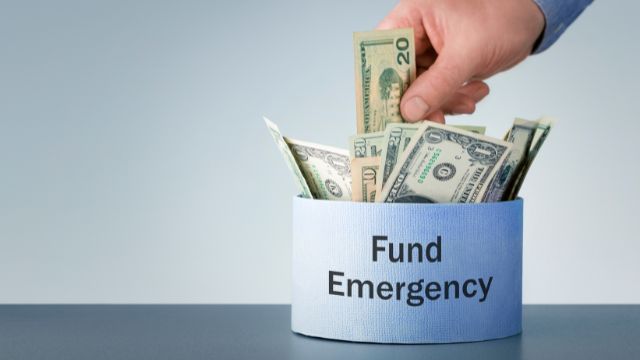A piggy bank, a jar of spare change, or a mound of cash hidden under your mattress — these old-fashioned savings locations no longer serve you in today’s economy. You need an official account to protect your money and keep pace with inflation.
But what account should you choose? If you aren’t sure where to start, it might help to know where other people put their emergency funds. Below, let’s take a look at the common options used today.

Credit
The first option on the list is no savings account at all, but a loan.
The harsh reality is that many people don’t have any savings at all. According to a new survey, 63 percent of workers can’t afford a $500 emergency expense. This falls in line with previous studies that show most people aren’t equipped to handle unexpected repairs or purchases.
Without a cash cushion of your own making, you may have to take out a personal loan online, a line of credit, or a credit card to cover unexpected expenses. While these loans aren’t perfect substitutes for an emergency fund, they may provide a safety net in a pinch.
If your savings fall short in an emergency you can quickly start the application process for a personal loan with a virtual application. Your eligibility will depend on your lender, so it’s a good idea to shop around. This process will also help you get a feel for the rates and terms, cherry picking the most favorable options available to you today.
Basic Savings Account
A basic savings account (BSA) is one of the most popular options for your emergency fund. Most big banks and small financial institutions offer this type of account free of charge, provided you have a checking account with them.
A BSA is like a checking account in many respects. It too earns minimal interest on deposits and comes with FDIC insurance. However, they differ in one major way. While a checking account is designed for everyday debits and spending, your BSA is for specific purchases — whether it’s a planned splurge or unexpected expense.
High-Yield Savings Account
A high-yield savings account (HYSA) is a step up from the BSA. It’s a safe, FDIC-insured place to sock away savings provided by most banks and financial institutions. However, it delivers a higher rate of interest accrued on your all your deposits.
Thanks to the power of compounding interest, your emergency fund will grow faster in a HYSA than a BSA.
For the most part, a HYSA is a free and convenient option for your emergency fund. However, you should take care to read the fine print of this account. Some financial institutions keep higher yields behind a paywall. In some cases, this is a literal paywall of account fees. In others, it’s restricted access — limiting how and when you can withdraw funds or requiring you keep a minimum balance.
As fast accessibility is essential to your quick response to financial emergencies, you can’t lock your savings away; even a high interest rate isn’t worth these restrictions.
The Takeaway:
A lot of people rely on credit to help them in emergencies. While it provides a last-ditch safety next, you should rearrange your budget to see how you can increase your savings. Once you free up some cash to sock away for an emergency, choose between a basic and high-yield location as your savings destination.
